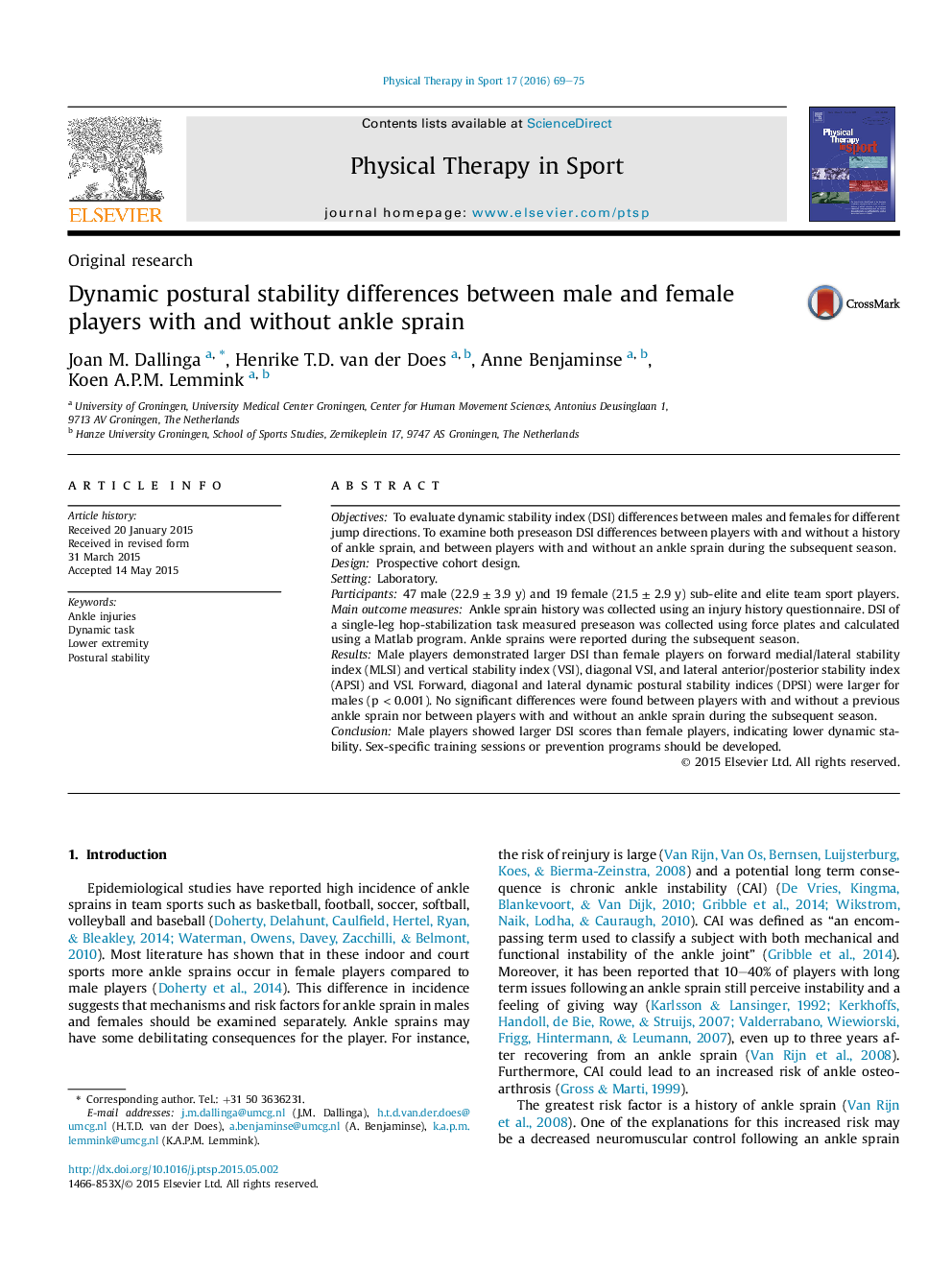| Article ID | Journal | Published Year | Pages | File Type |
|---|---|---|---|---|
| 2709896 | Physical Therapy in Sport | 2016 | 7 Pages |
•Male players showed worse dynamic stability than female players.•Male players with a history of ankle sprain did not demonstrate a significantly increased DSI.•No significant preseason DSI differences were found between players with and without an ankle sprain during the season.
ObjectivesTo evaluate dynamic stability index (DSI) differences between males and females for different jump directions. To examine both preseason DSI differences between players with and without a history of ankle sprain, and between players with and without an ankle sprain during the subsequent season.DesignProspective cohort design.SettingLaboratory.Participants47 male (22.9 ± 3.9 y) and 19 female (21.5 ± 2.9 y) sub-elite and elite team sport players.Main outcome measuresAnkle sprain history was collected using an injury history questionnaire. DSI of a single-leg hop-stabilization task measured preseason was collected using force plates and calculated using a Matlab program. Ankle sprains were reported during the subsequent season.ResultsMale players demonstrated larger DSI than female players on forward medial/lateral stability index (MLSI) and vertical stability index (VSI), diagonal VSI, and lateral anterior/posterior stability index (APSI) and VSI. Forward, diagonal and lateral dynamic postural stability indices (DPSI) were larger for males (p < 0.001). No significant differences were found between players with and without a previous ankle sprain nor between players with and without an ankle sprain during the subsequent season.ConclusionMale players showed larger DSI scores than female players, indicating lower dynamic stability. Sex-specific training sessions or prevention programs should be developed.
